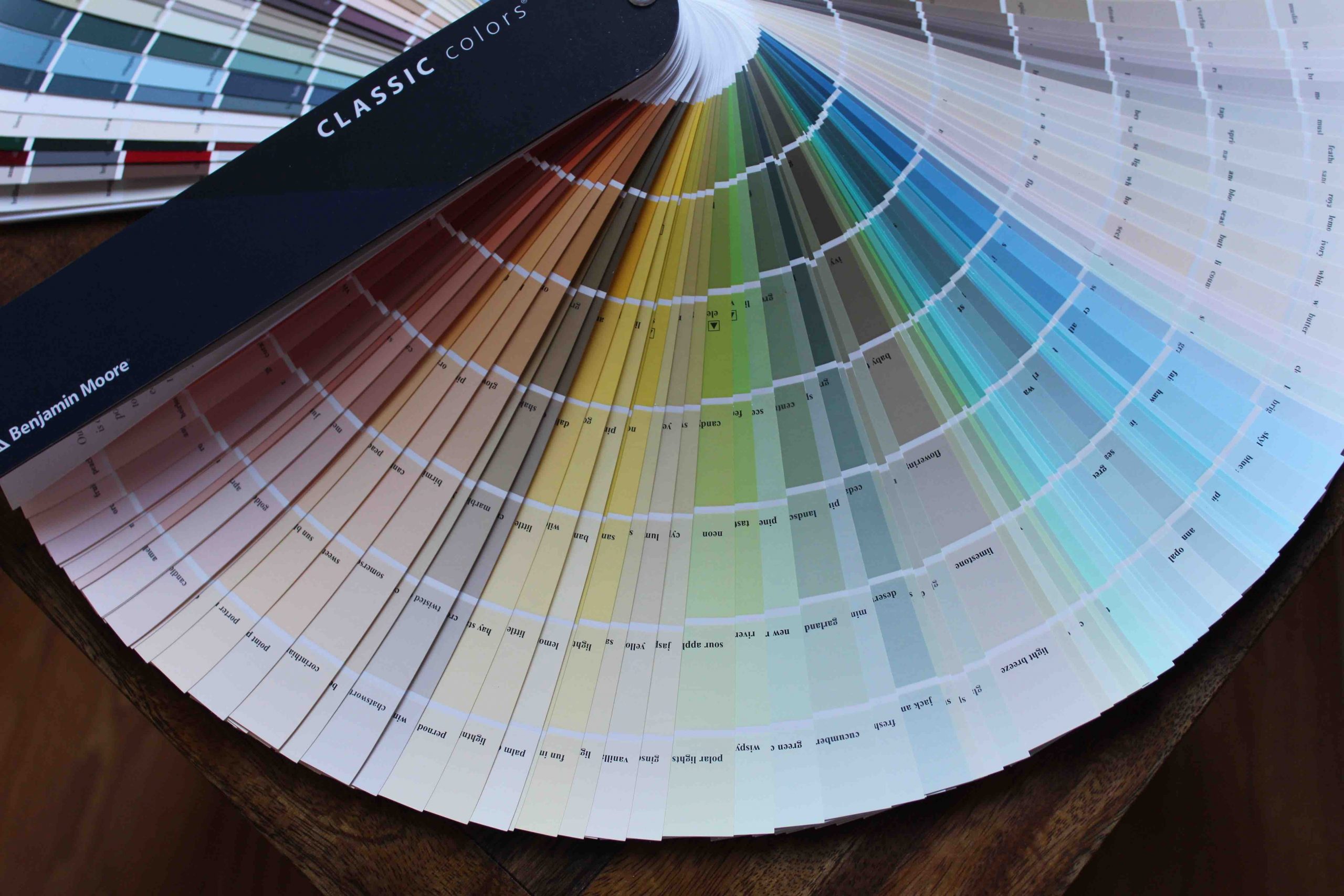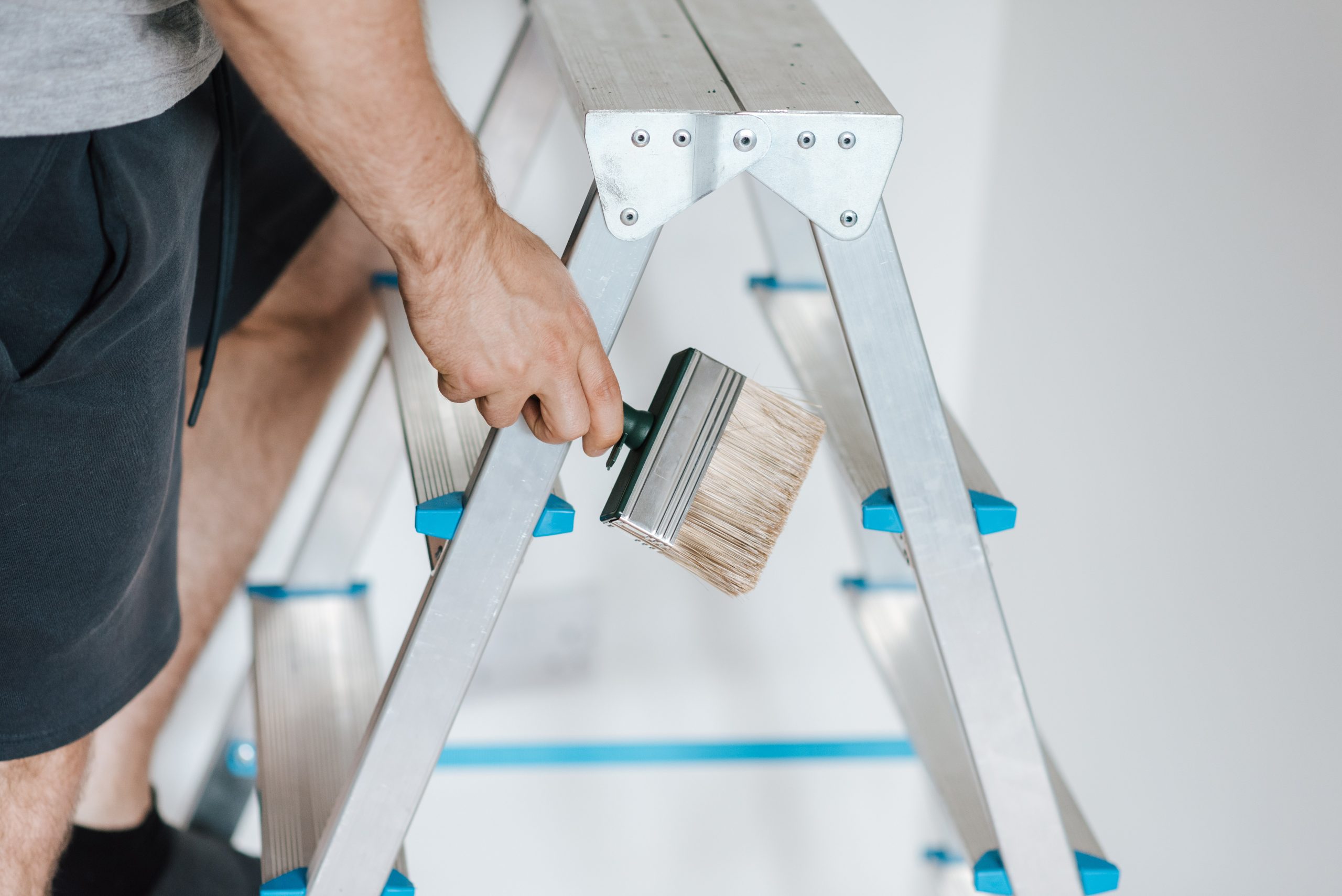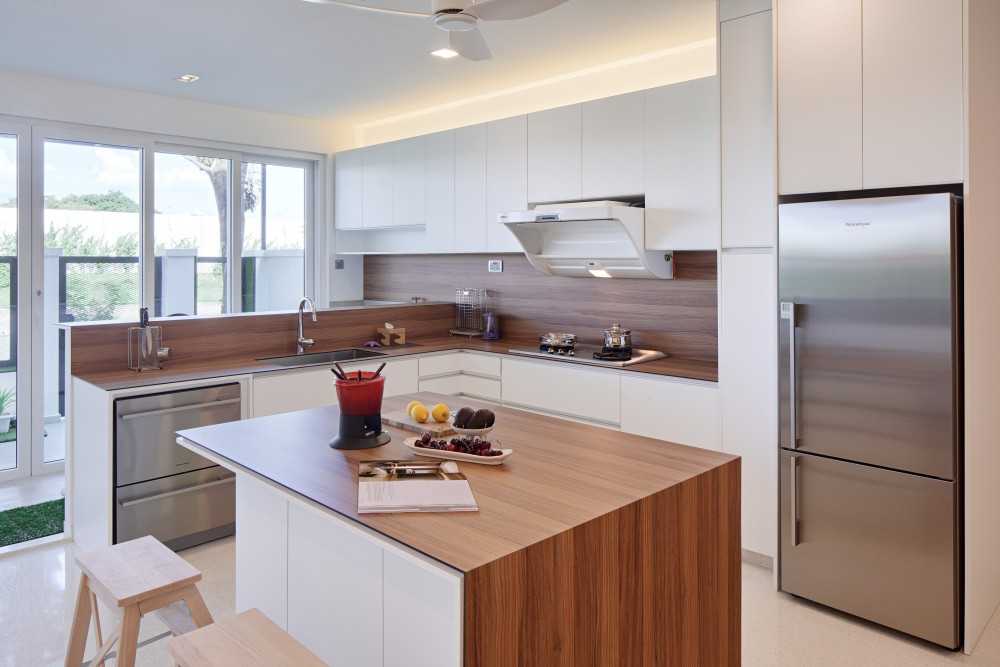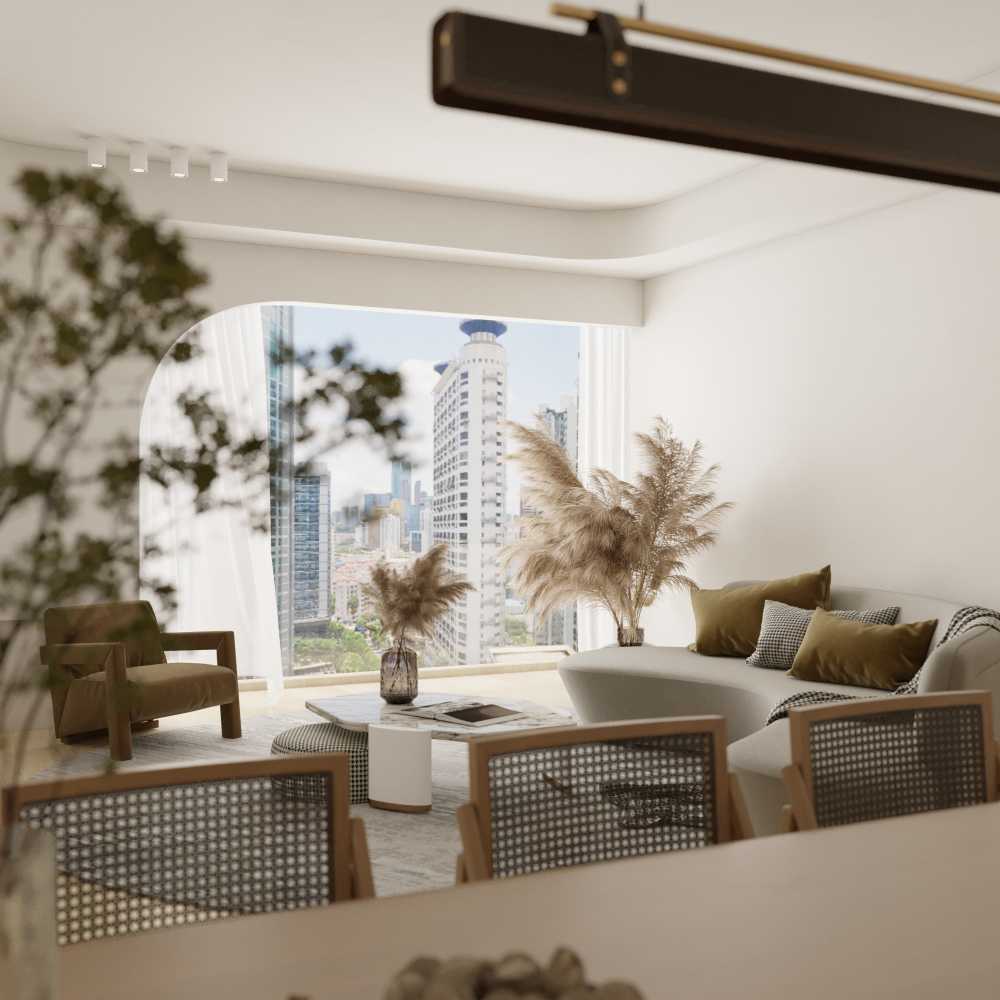Should You Splurge On A 6-Figure Renovation?
When it comes to renovating your home, it can be tempting to splurge on high-end materials and premium finishes.
These days, we often come across home tour videos showcasing beautifully renovated spaces that seem straight out of a design magazine.
These renovations aren’t cheap – it’s not uncommon to see home reno tours on YouTube with pricetags of $100,000 and beyond.
But does it make sense to splurge on a 6-digit renovation, or should you be setting yourself a smaller budget?
We’ll explore the pros and cons to help you make an informed decision that aligns with your needs and priorities.
How Expensive Is Expensive?
When embarking on a home renovation journey, it’s natural for homeowners to wonder, “How expensive is expensive?”
Understanding the cost of renovations is vital for setting realistic expectations and planning an effective budget.
The expense of a renovation project can indeed vary significantly, depending on various factors that contribute to the overall price tag.


In general, mid-range home renovations typically fall within the ballpark of $50,000 to $80,000.
Achieving a renovation below $50,000 is possible, but it may require some compromises, such as opting for fewer built-ins, choosing more affordable finishes, or limiting the scope to specific rooms rather than a complete overhaul.
As you research and come across home renovation projects online or hear about friends who completed their renovations for what seems to be a fraction of the market price, it’s essential to consider the context.
Many of these seemingly affordable projects might have been done pre-COVID when labour costs were lower.
Additionally, some costs that you see on designers’ portfolios may exclude expenses like electrical wiring, which can impact the overall budget.
On the other hand, if you are willing to invest above $80,000 in your renovation, the possibilities for customization become more extensive.
This budget allows for greater flexibility in selecting high-quality materials, indulging in bespoke designs, and tailoring your living space to suit your unique preferences and lifestyle.
However, it’s important to remember that there can be exceptions to these general estimates.
For instance, if you purchase an older house with existing built-in features but wish to tear everything down and rebuild from scratch, this process can add considerable costs to your renovation budget.
Such extensive structural changes and demolition work may quickly rack up additional expenses beyond the initial estimates. In these cases, what might have been initially perceived as a high-end budget of $80,000 may transform into a mid-range estimate, given the scale and complexity of the project.
TLDR: For most folks, anything above $80,000 would be considered a large renovation budget.
However, if you’re renovating a large space, or a landed property as compared to an HDB/condo, or you need to do a lot of hacking before you renovate, you may need to shift your budget accordingly due to the complexity of the work.
Pros Of Investing Heavily In Your Renovation
Now, let’s discuss the advantages of allocating a significant budget for your renovation.
Firstly, having a larger budget for your renovation allows you to invest in high-quality materials and skilled craftsmanship, which can significantly enhance the overall durability and functionality of your home.


Premium materials often offer better resistance to wear and tear, ensuring that your renovated spaces withstand the test of time and daily usage.
For example, let’s consider the flooring materials you choose for your home.
Opting for cheap vinyl flooring may seem like a cost-effective choice initially, but if it’s easily scratched by your pets or shows signs of wear within just a couple of years, you may find yourself facing the need for premature replacement.
This unexpected expense can be frustrating and disrupt your household routines.
On the other hand, if you choose to spend more on scratch-resistant and durable vinyl flooring, you are making an investment that pays off in the long term.
This sturdier material can withstand the daily activities of a busy household, including the antics of pets and the regular foot traffic. Its longevity and ability to maintain its appearance over time mean that you won’t have to worry about frequent repairs or replacements, saving you both time and money.
When choosing materials for your renovation, it’s essential to prioritize durability and practicality.
While some higher-priced options may add a touch of luxury, you should also consider their ability to withstand heavy use and their suitability for your lifestyle. Striking a balance between aesthetics and functionality is key to making the most of your renovation investment.
However, keep in mind that it’s essential to exercise discernment when allocating your budget.
Simply spending more money doesn’t guarantee better quality or results.


Researching and comparing different materials and ID or contractor options will help you make informed decisions. Consider seeking recommendations and reviews from previous clients to gauge the quality of your potential ID or contractors’ work.
Another significant advantage of investing in your renovation is the ability to tailor your space to match your unique preferences.
The goal is to create a personalized living environment that reflects your style and taste, and at the same time, maximizes functionality and utility.
Let’s talk about how tailoring or customizing can help optimize functionality in a space.
In Singapore, where apartments are typically compact and space is a precious commodity, customizing carpentry can be the ultimate solution to maximize the available space efficiently.
With an extensive renovation budget, you have the opportunity to create anything from custom-built cabinets and wardrobes to multi-functional furniture. This means that every aspect of your home can be optimized for both aesthetics and functionality.
For example, let’s consider the kitchen, which is an area where customization can make a significant difference.
A well-designed kitchen that maximizes storage and workspace can transform your cooking experience.


Bedok Landed ($750,000) by De Style Interior Pte Ltd
Custom cabinets can be tailored to fit specific appliances and utensils, ensuring that everything has its designated place and is easily accessible. This level of organization not only enhances the efficiency of your kitchen but also adds to its overall aesthetics.
In bedrooms, custom carpentry can create ingenious solutions for optimizing space.
From space-saving loft beds with built-in study areas to built-in wardrobes with smart storage solutions, customizing these elements can make a small bedroom feel more spacious and organized.
Cons Of Investing Heavily In Your Renovation
On the flip side, there are several disadvantages of investing heavily in your renovation.
Firstly, consider the financial burden and affordability of your dream renovation.
It’s essential to consider the financial implications of a lavish renovation, as expensive renovations can have a significant impact on your budget and long-term financial stability.
Before proceeding with any renovation project, especially one that involves a higher budget, it’s crucial to assess your financial readiness and ensure you can comfortably manage the expenses without jeopardizing your financial well-being.


Take a close look at your current financial standing, including your income, savings, and existing debt obligations.
Determine how much you can allocate to the renovation without compromising your ability to meet other essential financial commitments, such as mortgage payments, utility bills, and other living expenses.
Keep in mind that despite careful planning, unforeseen expenses may arise during the renovation process, posing challenges to your budget.
One significant factor contributing to potential cost overruns is the Variable Order (VO) – additional expenses incurred due to various factors that may not have been accounted for initially.
These VOs can have a considerable impact on your overall renovation cost, adding an extra financial burden on top of your agreed-upon budget.
With this in mind, when planning your renovation budget, it’s crucial to be prepared for unforeseen expenses that may arise during the process.
One effective strategy is to allocate a portion as a contingency fund, serving as a buffer for any unexpected costs that may surface.
A common recommendation is to set aside around 10-20% of the total budget for this purpose, ensuring that you have a safety net to cover Variable Order (VO) expenses or any other unanticipated challenges.
At the same time, be conservative in your planning and budgeting, and avoid stretching your budget to the point where any extra costs incurred from VOs become challenging to manage.
Finally, before investing heavily in your home renovation, you should understand that while an expensive renovation can elevate your living experience, there’s no guarantee that you’ll recoup the full renovation cost upon resale.
In fact, it is highly likely that a renovation project that may have been highly desirable and in-demand during the time of the renovation may not appeal to potential buyers several years later.
Home design trends can change rapidly, and what is considered stylish and modern today may become outdated in the future.
Take, for example, the popularity of brick wall designs in homes around 5-10 years ago.
At that point in time, many young couples eagerly embraced this trend and incorporated brick walls into their new BTO flats. At the time, it was a symbol of contemporary interior design and added a touch of industrial chic to living spaces.
However, as time passed, design preferences shifted, and today, these once-trendy brick walls are often viewed as dated and old-fashioned. The unmistakable style of a brick wall is now a giveaway, instantly dating the interior to that particular period.
Even if you steer clear of trends and opt for a more classic look, the preferences and tastes of potential buyers can vary widely.
While some may appreciate and be willing to pay a premium for certain high-end finishes and customized features, others may not place the same value on these elements.
As a result, the ROI on certain expensive renovation aspects may not align with your initial investment.
Finding A Balance: Alternatives To Expensive Renovations
Want to keep your renovations affordable, instead of going all out?
Here are some things you can do to bring down the cost of your renovations:
- Use more loose furniture instead of built-ins
- With built-ins, use prefabricated materials instead of custom-made options
- Opt for locally sourced tiles and materials instead of materials from halfway across the globe
- Obtain quotes from multiple contractors and suppliers to compare prices and services
Alternatively, if you don’t want to compromise on your renovations but still want to keep things affordable, opt for phased renovations.
This can be an excellent approach for homeowners who desire high-quality renovations but want to manage their budget more effectively.
Essentially, you’re breaking down your renovation project into several phases, allowing you to tackle one area at a time while staying within your financial comfort zone.
You can prioritize spaces that require immediate attention, in order to ensure that your home remains functional and comfortable.
In the meantime, plan and save for future phases, and you can get to those once you have some money saved up.
This strategy also gives you more time for planning and refining. As you complete the first phase of your renovations, you’ll still have time to change your mind and fine-tune your vision for what the rest of your home should look like.
However, this strategy does come with its own disadvantages.
One of the main drawbacks is the disruption to daily life that can occur during extended renovation periods.


Some homeowners may find it unpleasant to have ongoing construction and renovation activities affecting different parts of their home over an extended period rather than getting it all done at once.
Despite this potential challenge, if you prioritize financial flexibility and are willing to accept the temporary disruptions, phased renovations can offer substantial benefits.
The lower cash outlay over a more extended period can be advantageous for homeowners who prefer a manageable and more budget-friendly approach to their renovation journey.
A Final Word On Splurging On An Expensive Renovation
If you choose to invest heavily in your renovation, this can undoubtedly elevate the aesthetics and comfort of your home.
However, it’s crucial to weigh the pros and cons before making a decision.
Here, the first thing you should do is to assess your financial readiness and long-term plans.
If an extravagant renovation aligns with your lifestyle and priorities, go for it!
But don’t forget to explore alternatives that offer practicality and cost-effectiveness, and understand what you may be compromising on or giving up with an expensive renovation.
In the end, the key is to find a balance that creates your dream home without sacrificing your financial well-being. Happy renovating!
Want to check out the best interior designers in Singapore as rated by fellow homeowners across? Explore Hometrust today!
Renovating soon? Let Hometrust recommend the best interior designers.
If you are reading this, you are probably wondering how you can create your dream home.
Here’s the thing, everyone’s needs and requirements for their home renovation is different. A designer that may work for someone else, may not quite work for you.
At Hometrust, we’re here to help match top rated designers, recommended by past homeowners to you through our data-driven and matching algorithm.
Whether you are looking for partial renovation or a full fledge overhaul, we’ll be able to recommend you top designers to match your renovation requirements and lifestyle.
Recommendations and free and you can simply start by helping us understand your needs below!
Get RecommendationsRenovate safe!
The Hometrust Team




